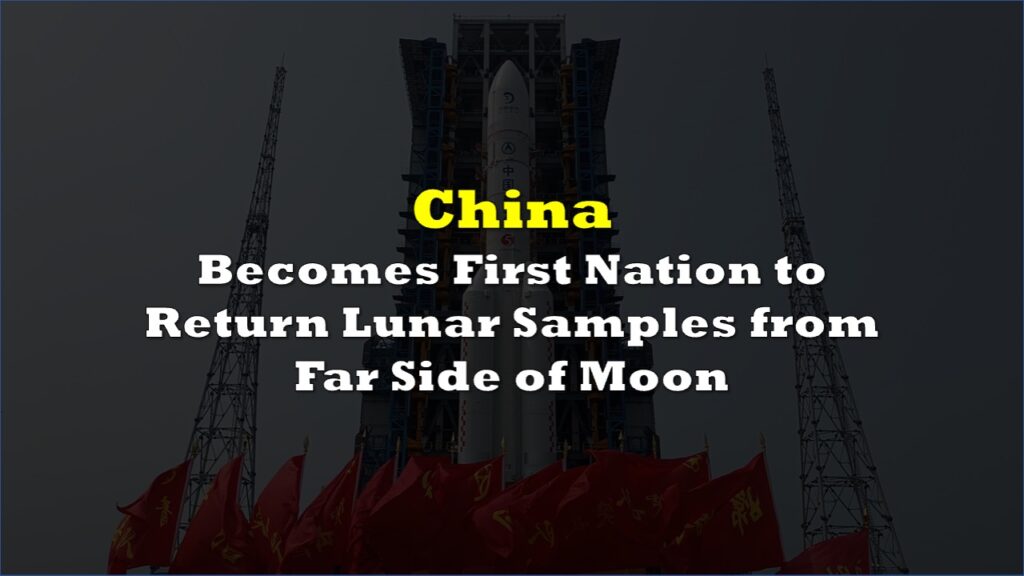Over the past two decades, China has consumed vast amounts of raw materials to support its growing and wealthier population and its expansive industrial needs. However, despite recent economic challenges and a stated desire to shift away from resource-intensive industries, China’s appetite for commodities has not only persisted but increased.
In 2023, China’s imports of basic resources reached record levels, and the trend continued into the first five months of 2024, with a 6% rise in imports. This surge in stockpiling is largely driven by fears of geopolitical threats and potential disruptions in supply routes.
China’s dependence on imported resources is significant. Despite being a major refining center for metals, China imports 70% of its bauxite and 97% of its cobalt. Energy imports are also critical, with the country bringing in 40% of its natural gas and 70% of its crude oil. The food sector is particularly vulnerable, with China importing 85% of the 125 million tonnes of soybeans needed annually to feed its livestock, especially pigs.
Stockpiling history
The impetus for China’s current stockpiling can be traced back to several key events. In 2018, then-President Donald Trump imposed tariffs on Chinese exports, prompting China to retaliate with duties on American soybeans. The COVID-19 pandemic further disrupted global supply chains and raised commodity prices. The war in Ukraine exacerbated these issues, demonstrating the potential for major powers to use embargoes as a strategic tool.
China’s preparation for potential geopolitical conflict involves significant expansion of its storage infrastructure. Unlike the United States, where strategic reserves are government-controlled, China’s stockpiles include both state and private facilities.
Since 2020, China’s crude oil storage capacity has increased from 1.7 billion to 2 billion barrels. The country’s underground gas storage has grown from 15 billion cubic meters (bcm) in 2020 to a projected 55 bcm by 2025, with further expansions planned.
Stockpiling binge
Recent data indicates that China’s stockpiling efforts are ramping up. The USDA forecasts that by the end of the current growing season, China’s stocks of wheat and maize will represent 51% and 67% of the world’s total, respectively. Similarly, stocks of soybeans have doubled since 2018 to 39 million tonnes and are projected to reach 42 million tonnes.
In the metals sector, China’s inventory build-up since 2018 is substantial, with reserves covering at least 35% to 133% of its annual demand, depending on the metal. Gas storage has also increased, with current reserves sufficient for 23 days of consumption, up from 15 days five years ago. This is expected to increase to 28 days by 2030.
China’s rapid accumulation of commodities has raised concerns in the United States, particularly regarding potential inflationary effects on global commodity prices and the strategic implications of China’s actions. Gabriel Collins, a former analyst at the U.S. Department of Defense, noted, “When you juxtapose that against China’s military build-up, it starts to be very concerning” .
Commodity encumbrance
Zoltan Pozsar, a well-regarded financial analyst, has pointed out before a context to China’s commodity strategy in the geopolitical scene. In a Credit Suisse article back in December 2022, he warned that G7 investors should be concerned about the possibility of a gold-backed renminbi (RMB) eclipsing the U.S. dollar, a move intertwined with China’s broader strategy of commodity encumbrance. Pozsar explained that China is gradually imposing the use of the yuan in oil markets, which he expects to fully manifest in three to five years.
China’s strategy, as described by Pozsar, involves increasing local value-addition in oil-producing regions like Iran, Saudi Arabia, and the Gulf Cooperation Council (GCC) nations, effectively reducing the value captured by Western industries. This approach extends to other sectors and regions through what is often referred to as “debt trap diplomacy,” where countries indebted to China are forced into geopolitical allegiance or preferential treatment. Notably, 97 countries, primarily in Africa, Central Asia, Southeast Asia, and the Pacific, owe significant amounts to China. Major debtors include Pakistan ($77.3 billion), Angola ($36.3 billion), and Ethiopia ($7.9 billion).
Pozsar highlighted how this strategy has already started to shift global trade dynamics. China has become a significant exporter of Russian LNG to Europe, while India has taken on a similar role with Russian oil and refined products. These developments underscore China’s intent to leverage its stockpiling and geopolitical strategies to reshape global economic and political landscapes.
China’s stockpiling strategy appears to be a defensive measure in anticipation of potential geopolitical tensions, particularly with the prospect of a hawkish American administration. While the current scale of stockpiling is not yet sufficient to secure China in a prolonged conflict, the trend is clear and concerning. As China continues to build its reserves, global markets and geopolitical dynamics will likely feel the impact.
Information for this briefing was found via The Economist and the sources mentioned. The author has no securities or affiliations related to this organization. Not a recommendation to buy or sell. Always do additional research and consult a professional before purchasing a security. The author holds no licenses.









